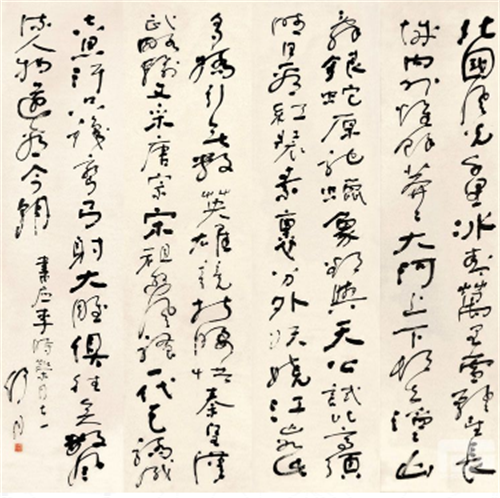与
字画鉴定评估有关的知识是多方面的,有些比较直接,有些就间接一些。努力学习和掌握这些知识,对于书画的鉴定,往往产生比较大的作用。
The knowledge related to the appraisal and evaluation of calligraphy and painting is multifaceted, some are more direct, while others are more indirect. Working hard to learn and master these knowledge often has a significant impact on the appraisal of calligraphy and painting.
一、书画家的字号、籍贯和生卒时间
1、 Calligrapher and painter's trade name, place of origin, and date of birth and death
掌握书画家的字号、籍贯和生卒时间,对于书画的鉴定工作很有帮助。这些问题往往被某些作伪者忽略,假如我们比较熟悉的话,那么,就能够比较容易地看出问题。
Mastering the trade name, hometown, and time of birth and death of calligraphers and painters is very helpful for the identification of calligraphers and painters. These issues are often overlooked by some counterfeiters, and if we are familiar with them, we can easily identify them.
但是,有些书画家的生卒时间等问题,在过去的文献中,有的没有记载,有的记载不够真确,这样,作品本身就变成了一手材料,它能补充文献的不足或纠正文献的错误。
However, some calligraphers and painters have issues with their birth and death dates. In previous literature, some have not recorded them, while others are not accurate enough. As a result, the work itself becomes first-hand material, which can supplement the shortcomings or correct errors in the literature.
例如:有些书画家的作品具有一定的艺术水平,但在文献上根本就查不到这位画家,更谈不上弄清他的字号、籍贯、生卒时间、艺术专长和主要活动了。这样的例子是相当多的。
For example, some calligraphers and painters have certain artistic levels in their works, but this painter cannot be found in the literature, let alone clarify his trade name, hometown, birth and death time, artistic expertise, and main activities. There are quite a few examples like this.

二、文史知识
2、 Knowledge of Literature and History
在书画鉴定中,还常常用避讳分为避朝讳(避当皇帝及先帝的名字)与避家讳(避作者家中长辈或祖先的名字)两种。在鉴定学中,避朝讳比比较容易掌握,避家讳就比较难以掌握了。避讳的方法主要有三种:
In the appraisal of calligraphy and painting, taboos are often divided into two types: avoiding dynasty taboos (avoiding the names of emperors and ancestors) and avoiding family taboos (avoiding the names of elders or ancestors in the author's family). In forensic science, avoiding taboos is easier to master than avoiding taboos at home. There are three main ways to avoid taboos:
一种是将要避讳的字缺写一笔(多为后一笔),另一种是将避讳的字换个意思相尽的替代字,还有一种是将要避讳的字空格不写。
One is to write a missing stroke (mostly the last stroke) for the word to be avoided, the other is to replace the word to be avoided with a substitute word with the same meaning, and the other is to not write the blank space for the word to be avoided.
当然,运用避讳进行书画断代,要了解避讳的时代特点,例如宋代"玄"、"朗"等字是由北宋真宗赵桓大中祥符五年开始避讳的,在此以前这样的字是不避讳的。如果见到一幅宋代人写的字或者绘画作品的题诗,款暑是大中祥符五年以前,对这些不避讳是符合规律的,而款为大中祥符五年以后的,这些字不避讳就不合规律,就有问题了。
Of course, when using taboo in dating calligraphy and painting, it is necessary to understand the characteristics of the era of taboo. For example, the characters "Xuan" and "Lang" in the Song Dynasty were taboo from the fifth year of the Dazhong Xiangfu reign of Emperor Zhenzong of the Northern Song Dynasty, and such characters were not taboo before this time. If you see an inscription poem written by a Song Dynasty person or a painting, it is in line with the law to avoid these characters five years before the Da Zhong Xiang Fu, while it is not in line with the law to avoid these characters five years after the Da Zhong Xiang Fu. This is a problem.
我们这儿所讲的只是一般的情况,此外,也还有个别特殊的例外,如米芾的《蜀素贴》卷中,前后有两个"殷"字,一个缺一笔,另一个就不缺。这就要根据具体的作品作具体的分析。同时,对于避讳问题也不能僵死地一成不变地对待,有些临古的书法作品,完全按照原样临而不避讳。
What we are talking about here is only the general situation, and there are also some special exceptions, such as in Mi Fu's "Shu Su Tie" volume, there are two "Yin" characters before and after, one missing a stroke, and the other not missing. This requires specific analysis based on specific works. At the same time, the issue of taboos cannot be rigidly fixed. Some ancient calligraphy works are completely presented without taboos.
In short, the issue of taboos is complex. In the appraisal of calligraphy and painting, the use of taboos to determine the era must be analyzed based on specific circumstances and flexibly grasped according to different conditions. For more related content, come to our website http://www.jinandayatang.com Consulting!
